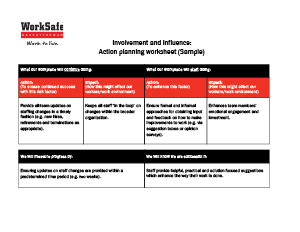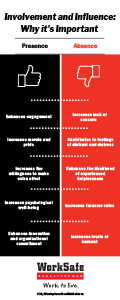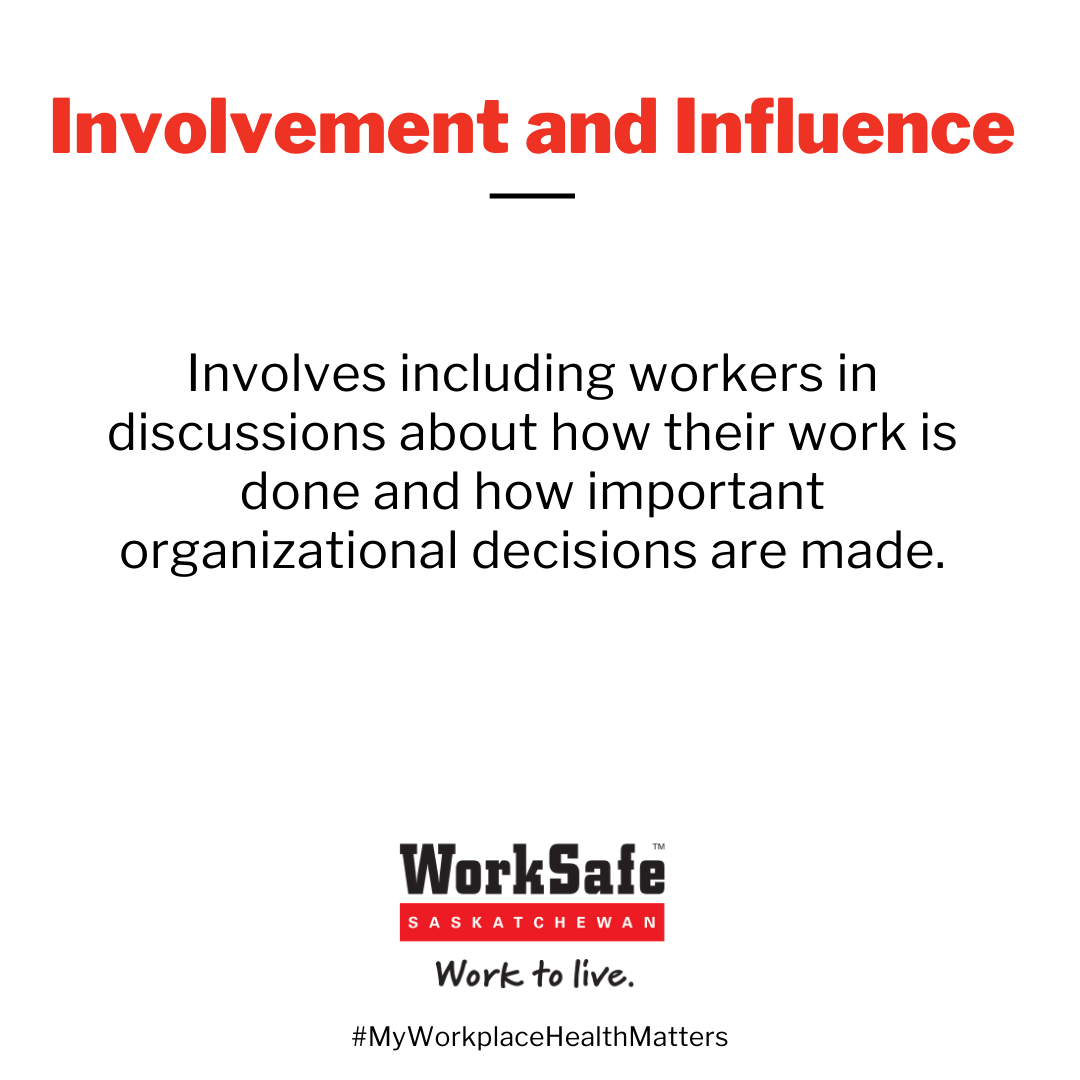 Involvement and influence
Involvement and influence
Involves including staff in discussions about how their work is done and how important organizational decisions are made.
“Without involvement, there is no commitment. Mark it down, asterisk it, circle it, underline it. No involvement, no commitment.” – Stephen Covey
Overview
What is involvement and influence?
Involvement and influence is present in a work environment where workers are included in discussions about how their work is done and how important decisions are made. Opportunities for involvement can relate to a workers’ specific job, the activities of a team or department or issues involving the organization as a whole.
An organization with good involvement and influence would be able to state that:
- Workers are able to talk to their immediate supervisors about how their work is done.
- Workers have some control over how they organize their work.
- Workers’ opinions and suggestions are considered with respect to work.
- Workers are informed of important changes that can impact how their work is done.
- The organization encourages input from all workers on important decisions related to their work.
FAQs
Action
Next steps: Encouraging involvement and influence in the workplace
Involvement and Influence is psychosocial factor 8 from CAN/CSA-Z1003-13/BNQ 9700-803/2013 – Psychological Health and Safety in the Workplace. Retrieved from: https://www.csagroup.org/article/cancsa-z1003-13-bnq-9700-803-2013-r2018/. See also Guarding Minds at Work (Samra et al.): Retrieved from https://www.guardingmindsatwork.ca/resources.




